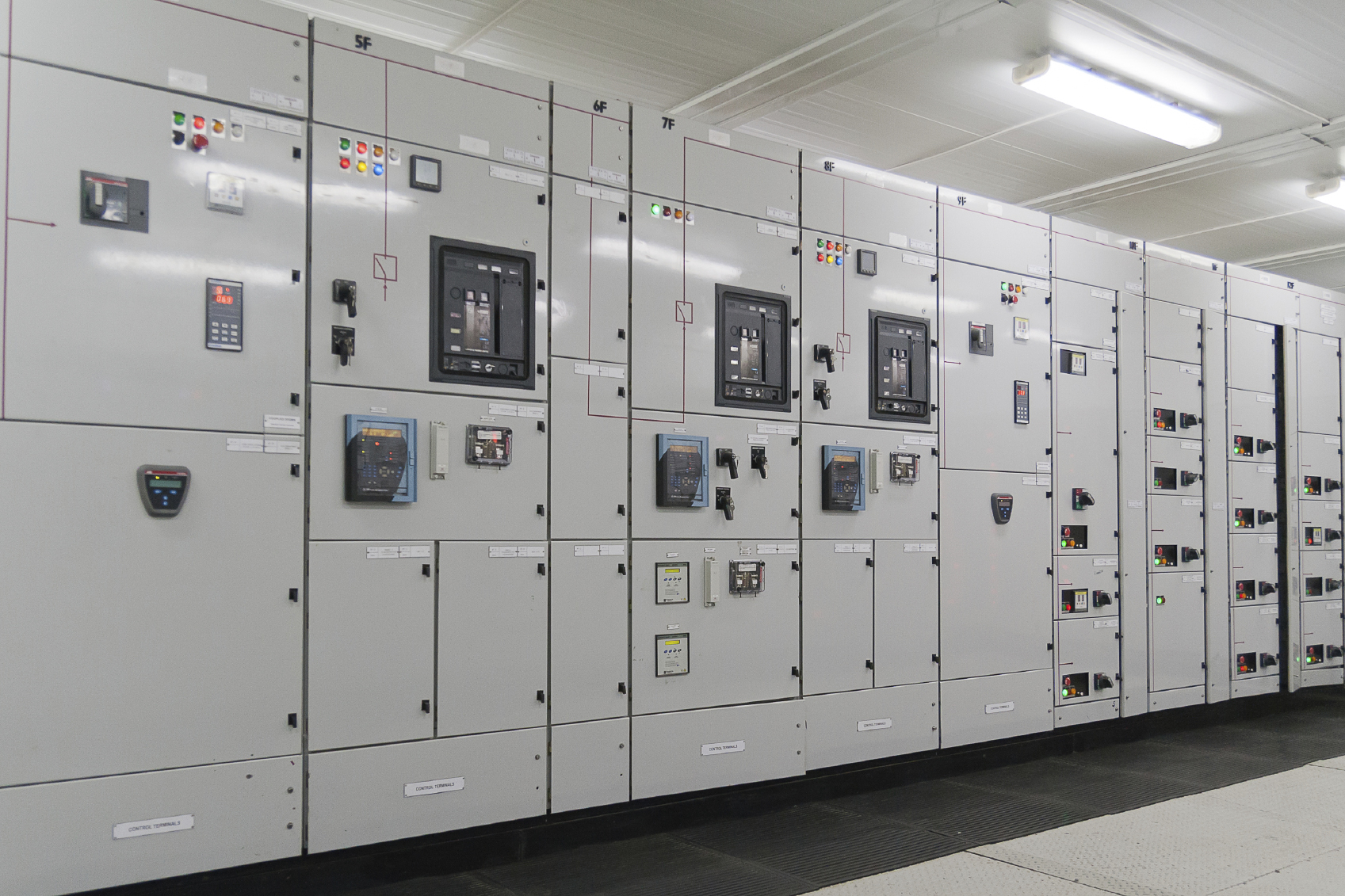- to control, protect, and isolate electrical equipment. Often housed in metal enclosures, they ensure that the electrical system remains stable and safe.
- Importance: The primary function of switchgear is to ensure the safety of both the electrical system and the personnel operating it. By interrupting the power flow during anomalies, switchgear prevents potentially dangerous situations like electrical fires or equipment damage.
- Applications: Switchgear and protection finds its application in a wide array of environments—ranging from residential settings to large industrial plants, substations, and expansive power networks. Its ability to both protect and manage electrical currents makes it a staple wherever electricity is employed.

Components of Switchgear
Circuit Breakers
Circuit breakers are automatic switches designed to protect an electrical circuit from damage caused by overcurrent or short circuiting. They detect faults and interrupt the flow of current, effectively disconnecting the faulty apparatus from the rest of the network. This capability is crucial for preventing damage and ensuring the safety of the electrical system.
Switches
Switches in switchgear can either be manual or automatic. They offer the essential function of controlling the flow of electricity, providing the ability to disconnect elements of a circuit for maintenance or emergency purposes. Switches are integral to the operation of switchgear, adding a layer of control and safety.
Relays
Relays act as the vigilant sentinels within a switchgear configuration. Designed to detect faults, they send signals to circuit breakers to take corrective action. These devices play a central role in the system’s ability to respond to electrical faults promptly and effectively.
Busbars
Busbars are the solid, flat strips of copper or aluminum that form the backbone of a switchgear setup. They distribute electrical power efficiently across the switchgear and connect various components. Their primary advantage lies in their low impedance, which ensures minimal energy loss during transmission.
Fuses
In many ways, fuses are the silent protectors of electrical systems. They safeguard against overcurrent by melting, which disrupts the electrical flow and prevents damage to the circuit. This simple yet effective mechanism makes fuses a crucial component in switchgear.
Types of Switchgear
- Low Voltage (LV) Switchgear: Commonly found in residential and commercial buildings, low voltage switchgear is used to manage electrical power at lower voltages. It ensures the safe and efficient distribution of electricity within households and workplaces.
- Medium Voltage (MV) Switchgear: Found in industrial settings and substations, medium voltage switchgear handles medium voltage levels. It ensures the reliable distribution of electricity across large facilities and between power grid components.
- High Voltage (HV) Switchgear: Used predominantly in power transmission networks, this switchgear manages the highest levels of voltage. High voltage switchgear responsible for connecting power stations to the grid, ensuring efficient large-scale distribution.
How Switchgear Works
Switchgear electrical systems are designed to provide comprehensive control and protection for electrical circuits.
- Fault Detection: The process begins when sensors and relays detect an anomaly indicating a potential fault or overcurrent condition.
- Power Interruption: The circuit breakers, upon receiving signals from relays, swing into action to disconnect the faulty section and isolate the problem, preventing further damage.
- Power Restoration: After the issue is resolved, whether manually or automatically, the system is reconnected and power is safely restored, ensuring a smooth and uninterrupted flow of electricity.

Importance of Switchgear in Electrical Systems
Switchgear is vital in maintaining the integrity and functionality of electrical systems.
- Ensures Safety: By detecting and responding to faults, switchgear protects equipment and personnel from electrical hazards, thus preventing accidents and injuries.
- Improves Efficiency: By providing stable and reliable connections, switchgear ensures an uninterrupted power supply, improving overall system efficiency.
- Prevents Damage: Minimizing the risk of electrical failures, switchgear extends the lifespan of electrical components, reducing downtime and associated costs.
Conclusion
In the world of electricity, switchgear plays an understated yet monumental role. It offers an intricate balance of safety, efficiency, and control, safeguarding our electrical systems from potential disasters. Whether in homes, industries, or power plants, understanding and incorporating the right switchgear is crucial for a stable and secure electrical environment.
FAQs
- What is the main function of switchgear?
Switchgear’s primary function is to control, protect, and isolate electrical circuits, ensuring the safe distribution and management of electrical power.
- What are the types of switchgear?
There are three main types: Low Voltage (LV), Medium Voltage (MV), and High Voltage (HV) switchgear, each serving different applications and voltage levels.
- How does a circuit breaker in switchgear work?
A circuit breaker automatically interrupts the flow of electricity during fault conditions, preventing damage to the electrical system and ensuring safety.
- Where is switchgear commonly used?
Switchgear is employed across residential, commercial, industrial settings, and power transmission networks, wherever electrical circuits require management and protection.
- How do I choose the right switchgear?
Consider factors like the voltage level of your system, the specific application, safety features, and the reliability of components, consulting with an expert if necessary.




